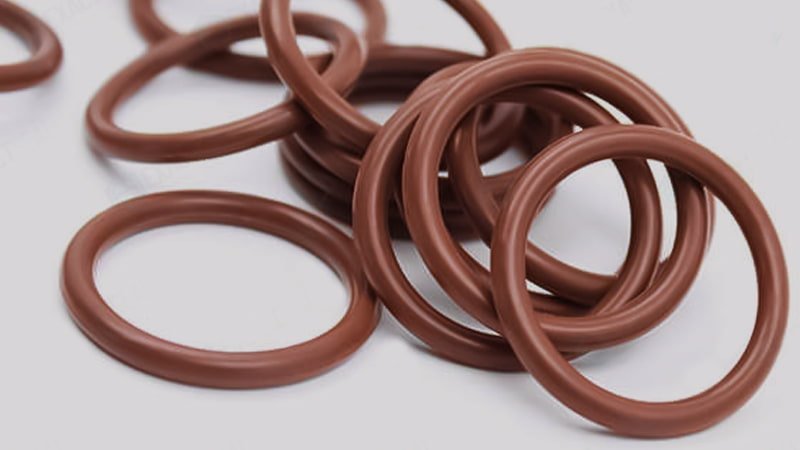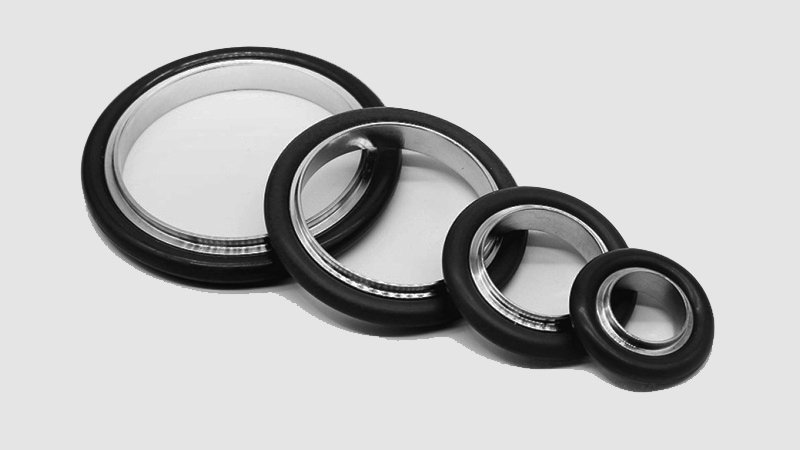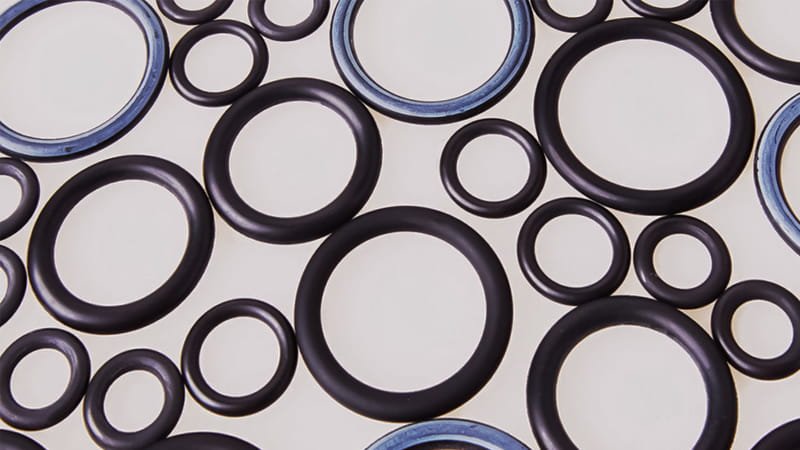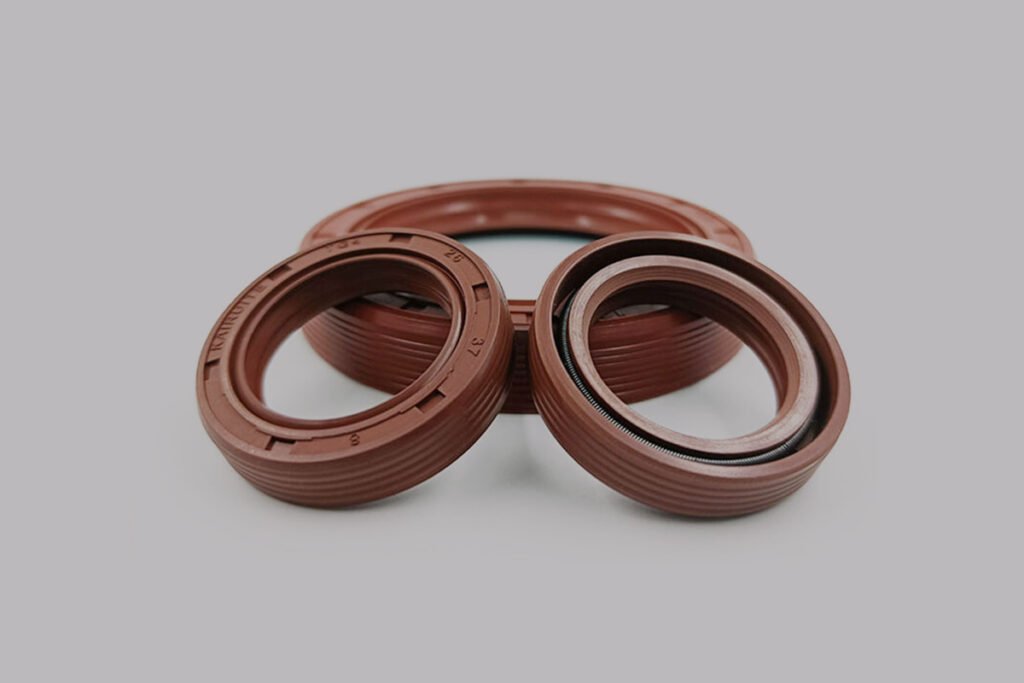A tiny leak from the wrong seal can ruin your process. This leads to costly downtime and frustration. Understanding the right rubber materials ensures a perfect, long-lasting vacuum.
The most commonly used rubber sealing materials in vacuum systems are Nitrile (NBR), Fluoroelastomer (FKM/Viton), and Silicone (VMQ). They are chosen for their low outgassing, good compression set, and specific chemical and temperature resistance, ensuring a reliable seal against atmospheric pressure.

Choosing the right seal seems simple, but it's one of the most critical decisions you'll make for your system. The wrong choice can lead to a cascade of problems. I've seen it happen many times in my 10 years in this industry. Let's break down what really matters so you can avoid these issues and get it right from the start. Your system's performance depends on it.
What Are the Key Properties for a Good Vacuum Seal Material?
Picking a seal on price alone is a huge mistake. This often leads to leaks and process failure. Knowing the key properties ensures you choose a material that truly works.
A good vacuum seal material must have low outgassing to prevent contamination, low permeability to stop gases from passing through, and a good compression set to maintain its shape. It also needs the right chemical and temperature resistance for the specific application.

When I evaluate a sealing material, I'm not just looking at a piece of rubber. I'm looking at a critical component defined by its physical properties. Let's break down the most important ones.
Outgassing and Permeability
These two factors are crucial for achieving and maintaining a deep vacuum. Outgassing is the release of trapped gases and vapors from the material itself when under vacuum. This can contaminate your process and limit the ultimate pressure. Permeability is the tendency of atmospheric gases to slowly pass through the seal material into the vacuum chamber. A good vacuum seal has very low levels of both.
Compression Set
This property describes the material's ability to return to its original shape after being compressed for a long time. A material with a poor compression set will become permanently flattened. This means it won't seal properly if the connection is ever taken apart and reassembled, creating a permanent leak path.
Temperature and Chemical Resistance
Your vacuum system doesn't operate in a bubble. It has a specific temperature range and may expose seals to various chemicals or cleaning agents. The rubber you choose must be able to withstand these conditions without degrading, swelling, or becoming brittle.
| Property | Why It Matters for Vacuum |
|---|---|
| Low Outgassing | Prevents contamination and helps achieve lower pressures. |
| Low Permeability | Minimizes gas leaking through the seal from the atmosphere. |
| Good Compression Set | Ensures the seal remains effective after long-term use. |
| Correct Temp. Resistance | Prevents seal failure from heat or cold. |
| Chemical Resistance | Protects the seal from degradation from process gases or oils. |
Which Rubber Materials Are Best for High Vacuum Applications?
Not all rubber seals can handle high vacuum. Using the wrong one causes outgassing and poor performance. Luckily, specific materials are designed to excel in these demanding conditions.
For high vacuum (HV) and ultra-high vacuum (UHV) applications, Fluoroelastomers (FKM), often known by the brand name Viton, are the top choice. They offer very low outgassing rates, excellent temperature resistance, and good chemical stability, making them ideal for demanding environments.

When you move into the high vacuum range (below 10⁻⁶ mbar), material selection becomes even more critical. Standard elastomers just won't cut it.
The Champion: Fluoroelastomer (FKM/Viton)
There's a reason FKM is the gold standard for high vacuum. Its molecular structure is very stable, which results in extremely low outgassing rates. It can also handle continuous temperatures up to 200°C (400°F) without losing its integrity. This combination of low outgassing and high-temperature stability makes it the go-to material for serious vacuum work, from research labs to semiconductor manufacturing. It costs more, but for HV applications, its performance is non-negotiable.
The Workhorse: Nitrile (NBR)
Nitrile is a fantastic, cost-effective material for rough and medium vacuum systems. However, it is not suitable for high vacuum. NBR contains plasticizers that will outgas significantly, preventing you from reaching high vacuum levels. It’s perfect for backing pumps and general industrial applications, but not for the chamber itself.
The Specialist: Silicone (VMQ)
Silicone has an incredibly wide temperature range and remains flexible at very low temperatures. However, it has higher gas permeability compared to FKM and is mechanically weaker. It can be a good choice for some static HV applications where extreme temperatures are a concern, but FKM is generally the more robust and reliable option.
How Do You Choose the Right O-Ring Material for Your Vacuum System?
Choosing between O-ring materials can be confusing. The wrong one leads to leaks and contamination. Following a simple checklist of your system's needs makes the decision easy.
To choose the right O-ring material, first determine your required vacuum level. Then, consider the operating temperature range and any chemicals the seal will contact. Finally, evaluate the cost versus the required performance and lifespan for your specific application.

An O-ring is a simple component that does a very important job. Selecting the right one is a straightforward process if you ask the right questions.
Step 1: Define Your Operating Conditions
Before you look at any material, write down the demands of your system.
- Vacuum Level: Is it a rough vacuum (e.g., for a backing pump) or a high vacuum (e.g., for a process chamber)?
- Temperature: What is the maximum and minimum temperature the seal will experience?
- Chemicals: Will the seal be exposed to oils, solvents, or reactive gases?
Step 2: Compare Material Properties
With your conditions defined, you can compare the common choices. I often use a simple chart like this to help my clients visualize the best fit.
| Material | Temp. Range | Best Vacuum Level | Key Strengths | Key Weaknesses |
|---|---|---|---|---|
| Nitrile (NBR) | -35°C to 120°C | Rough / Medium | Low cost, good oil resistance | High outgassing |
| FKM (Viton) | -20°C to 200°C | High / Ultra-High | Low outgassing, chemical resistant | Higher cost |
| Silicone (VMQ) | -60°C to 230°C | Medium / High | Wide temp range, flexible | Mechanically weak, permeable |
Step 3: Balance Cost and Performance
Don't let cost be your only driver. Using a cheap NBR O-ring in a high vacuum flange will save you a few dollars upfront but will cost you much more in lost time, ruined experiments, and troubleshooting. I always advise my customers to invest in the right material for the job. An FKM O-ring might be more expensive, but its reliability in a high vacuum application is worth every penny.
Why is Fluoro Rubber (FKM) So Common in Oil Rotary Vane Pumps?
You've likely seen FKM seals in oil-sealed pumps. Wondering why they're standard? The reason is a perfect match of properties that ensures long-term pump reliability and performance.
Fluoro Rubber (FKM) is common in oil rotary vane pumps because of its excellent resistance to hydrocarbon oils and high temperatures. It maintains a stable, effective seal without degrading or swelling when exposed to the pump's oil, ensuring long life and reliable vacuum performance.

From my experience as both a user and supplier of vacuum pumps, this is one of the most practical examples of material selection. In oil-sealed pumps, like rotary vane pumps, FKM is absolutely the standard material for seals and gaskets, and for a very good reason.
The Challenge: Oil and Heat
An oil rotary vane pump works by using oil to seal the rotating vanes against the pump housing. This oil gets hot during operation. This creates a challenging environment for any elastomer seal. The seal is constantly exposed to warm hydrocarbon oil. If you were to use a material like NBR, it would absorb the oil, swell up, and eventually break down. This degradation leads to oil leaks and, more critically, air leaks that prevent the pump from reaching its ultimate vacuum.
The Solution: FKM's Chemical Stability
This is where FKM shines. It is specifically engineered to be highly resistant to hydrocarbon oils, fuels, and many other chemicals, even at elevated temperatures. It simply does not swell or degrade when in contact with pump oil. This chemical stability ensures that the seals maintain their shape and sealing force for thousands of hours of operation. In my 10 years in this industry, I've seen countless pumps come in for repair. The ones that fail due to seal degradation almost always had the wrong material installed by mistake. Using FKM from the start prevents this headache and is a key reason for the reliability of modern oil-sealed pumps.
Final Thoughts
Choosing the right rubber seal—whether NBR, FKM, or Silicone—is crucial. Match the material to your vacuum level, temperature, and chemicals to ensure a reliable, leak-free system.


